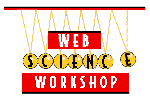
|
The scattering of light by the atmosphere, which creates the blue sky and red sunsets, can be modeled when light from a flashlight shines through clear glue sticks. |
![]()
|
|
![]()
|
No immediate assembly required. |
![]()
|
|
![]()
|
The Mini-MagLite emits white light. The glue stick scatters the blue light out of the Mini-MagLite beam more than the yellow or the red light. Because the first color to be scattered is blue, the end of the glue stick nearest the Mini-MagLite appears blue and the other end is yellow to yellow-orange. As glue sticks are joined to increase the length, more yellow light is scattered and the colored circle changes to an orange color. The glue stick scattering model offers a demonstration of why the sky is blue and sunsets are red. The sky is blue because blue light is most readily scattered from sunlight in the atmosphere, just as blue light was most readily scattered from white light in the glue sticks. If blue light was not scattered in the atmosphere, the sun would look a little less yellow and a little more white, and the rest of the sky would be black. At sunset, the sun is low near the horizon, and light travels through a greater thickness of atmosphere before reaching your eyes than it does when the sun is higher in the sky. Just as the light traveling along the glue sticks got redder as the length of the glue stick path got longer, so the sunset is red when the atmospheric path through which the sunlight travels gets longer. The scattering that produces the red sunset may be enhanced by pollution or other atmospheric conditions. |
![]()
|
Scattering can polarize light. Place a polarizing filter between the Mini-MagLite and the first glue stick. Turn the filter while one person views the glue stick from the top and another views it from the side. Notice that when the top person sees a bright beam, the side person will see a dim beam, and vice-versa. You can also hold the polarizing filter between your eye and the glue sticks and rotate the filter to make the beam look bright or dim. The filter polarizes the light and so does the scattering. When the two polarizations are aligned, the beam will be bright; when they are at right angles, the beam will be dim. Scattering polarizes light because light is a transverse wave. The direction of the transverse oscillation of the electric field is called the direction of polarization of light . The beam of light from the Mini-MagLite contains photons of light that are polarized in all directions: horizontally, vertically, and all angles in between. Consider only the vertically polarized light passing through the glue sticks. This light can scatter to the side and remain vertically polarized, but it cannot scatter upwards! To retain the characteristic of a transverse wave after scattering, only the vertically polarized light can be scattered sideways, and only the horizontally polarized light can be scattered upward. This is shown in the drawing below.

|
